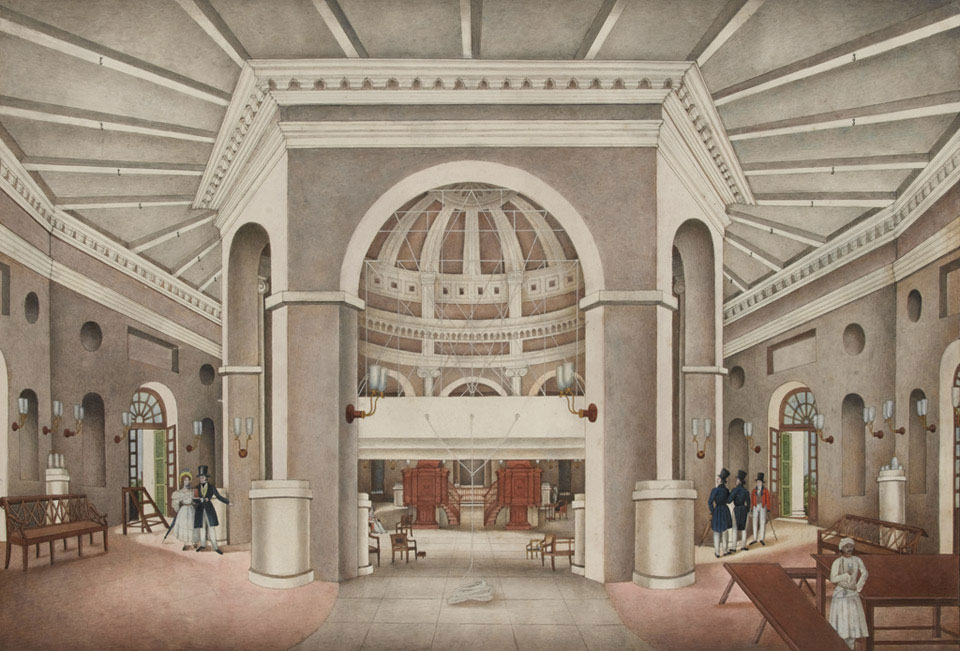
Online Collection
'Interior view of St James's Church, Delhi', 1836 (c)
Watercolour on European paper, by a Company artist, Delhi, 1836 (c).
The Anglo-Indian soldier James Skinner (1778-1841) was the son of a Scottish officer in the East India Company's service and a Rajput lady. Formerly an officer in the Maratha Army, Skinner raised two cavalry units for the British, later known as 1st and 2nd Skinner's Horse. Nicknamed 'The Yellow Boys' for their flamboyant saffron-coloured uniforms, they were famous for their horsemanship and skill at arms. Skinner was well rewarded, enabling him to acquire a town house in Delhi and a large estate at Hansi, Haryana. He maintained a close interest in Indian culture and was an important patron of the arts, commissioning a number of paintings recording his life and exploits.
After being wounded on campaign Skinner vowed that if he survived he would build a church as an offering of thanks to God. He did this at a cost of £20,000 and it was consecrated in 1836. In the foreground the tomb of Skinner's close friend William Fraser (1784-1835) can be seen. Fraser was an administrator in the Company's service and a major in Skinner's regiment. He was also an artist and a collector of Company paintings. Fraser was assassinated in 1835 and later Skinner had his friend's remains moved to the newly-built church.
Fanny Parks, the wife of a British official and an enthusiastic traveller, visited the church in 1838 and delivered her verdict,
'I do not like the design. The dome appears too heavy for the body of the church, and in the inside it is obliged to be supported by iron bars - a most unsightly affair. A man should visit the ruins of Gaur, and there learn how to build a dome ere he attempt it'
Within the church it is possible to see the criss-cross of ropes linked to a large cloth punkah (a fan). This was used to keep the congregation cool during services.
NAM Accession Number
NAM. 1956-02-27-4
Copyright/Ownership
National Army Museum, Out of Copyright
Location
National Army Museum, Study collection
Object URL
https://collection.nam.ac.uk/detail.php?acc=1956-02-27-4

